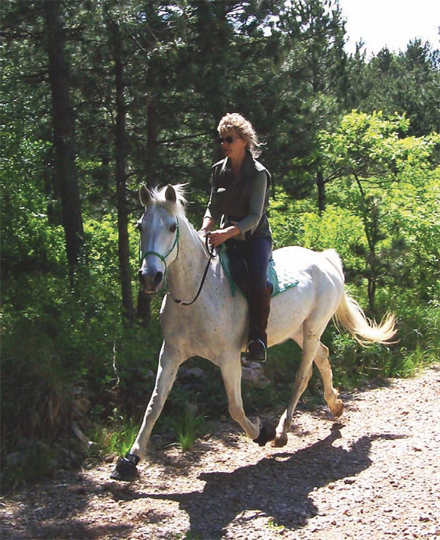Keeping horses "natural" has many advantages. In the case of hoof care, Linzi Hill explores Barefoot Trimming.
Although it is thought that the horseshoe could have been introduced as early as the 4th Century, barefoot working horses have been in existence for as many years in countries such as Mongolia and the South Americas. Indeed, even where shoeing is a feasible option, many horse owners value the improvement in horn, hoof shape and gait that the barefoot method offers their equine companion.

As the natural approach to equine husbandry has caught on, the UK, in particular, has embraced the barefoot concept and a handful of qualified equine podiatrists exist, maintaining the feet of leisure and competition horses alike.
Why is Beneficial?
As the natural approach to equine husbandry has caught on, the UK, in particular, has embraced the concept and a handful of qualified equine podiatrists exist, maintaining the feet of leisure and competition horses alike.
So why is preferable to the protection of a ? In essence, the careful of the method allows wear of the growing whereas metal shoes do not. Bad shoeing can degrade the shape of the and in some cases hinder movement. There are also reports that lameness is reduced or even eradicated when .
In researching this topic I can only find good things said about gait improvements after shoes are removed. Some report soundness when previously a was lame. The , after all, will be moving as naturally as his physiology will allow. Reports of more fluid movement and improvement of problems such as dishing and overreaching make a good case for the management of then removing shoes will undoubtedly be easier than if he has poor crumbly or cracking hooves. If this is the case, extra management will be required in the early months.
Most horses need a transition time of around eight months or more to get used to being without shoes, although this is a fairly long time period owners unanimously agree that it’s worth the wait. Removing shoes and continuing full work is entirely plausible. As long as a horse is managed correctly after the initial period he can go on to compete as normal.

What happens when you switch from metal shoes to ?
Most horses need a transition time of around eight months or more to get used to being without shoes, although this is a fairly long time period owners unanimously agree that it's worth the wait. Removing shoes and continuing full work is entirely plausible. As long as a is managed correctly after the initial period he can go on to compete as normal.
When the is first removed increased blood flow starts the process of rebuilding the structure of the . The trick is to give the time to get used to the new way of going. If your is a little lame it does not necessarily mean that isn't for him - it may just mean that he hasn't been given enough time to adjust. can help here if your is competing or in full work. On the other hand, some horses take to it immediately without any transition time at all, especially if he already has a healthy horn and a good . Your podiatrist or will be able to advise on this.
The introduction of harder surfaces and gravel is important. The needs to be strengthened and this can be done by gradual exposure to different types of surfaces. Some initial work in hand may be needed and feeding supplements may also be advisable.
An doesn't just your they also provide support and information about the management of the , and any supplements that may prove helpful.
Pros:
Cheaper than shoeing
No worries about cast shoes
Improvement in horn, gait and
Cons:
Some horses need a gradual introduction to work
Protective boots can be tricky to fit
Possible traction problems with fast work
There are many benefits to a 's hooves without metal shoes. One of the most significant is that it can help prevent lameness due to -related injuries. Depending on your , the transition may be easier for some than others, depending on how long your has been wearing horseshoes and their natural when out of them. The decision should depend not only on your financial situation but also on the type of work you want your doing and preventing future problems with its feet or legs. There has never been a better time to make the switch!



